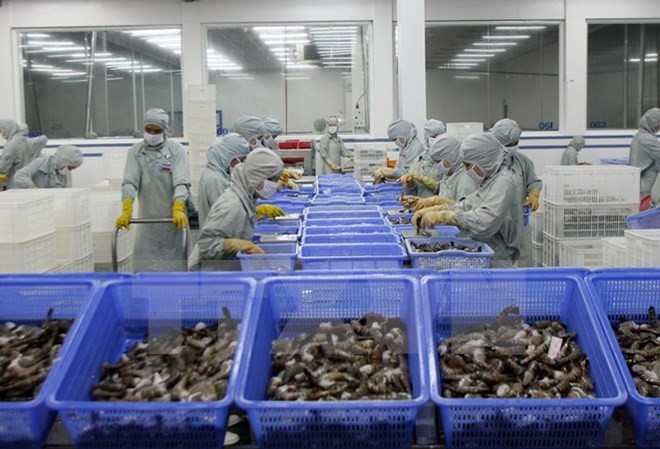
According to the Vietnam Association of Seafood Exporters and Producers (VASEP), leading European importers of Vietnamese shrimp were the UK, the Netherlands and Belgium, with growth of 46.5 percent, 47.8 percent and 34.1 percent, respectively.
Currently, the major competitors of Vietnam in the EU market are India and Ecuador. While India is reducing shrimp exports to the EU, Ecuador and Vietnam are paying greater attention to the market.
Particularly, the free trade agreement between Ecuador and the EU, which took effect from January 1, 2017, has offered Ecuador the preferential tax rate of zero percent from 3.6 percent earlier, enhancing the competitiveness of the country’s shrimp.
VASEP experts held that along with making full use of the Vietnam-EU FTA that is expected to become effective in 2018 Vietnamese firms should also meet requirements of the EU in quarantine, packing, and labeling.
At the same time, domestic enterprises should also improve their capacity and product quality, while building plans to cope with challenges in the market. They are also advised to pay more attention to labeling and quarantine.
Currently, the EU currently consumes about 30 percent of shrimp in the world, with about 6-8 billion USD per year. The market’s shrimp imports increased to 6.7 billion USD in 2016 from 5.6 billion USD in 2007.
Currently, the major competitors of Vietnam in the EU market are India and Ecuador. While India is reducing shrimp exports to the EU, Ecuador and Vietnam are paying greater attention to the market.
Particularly, the free trade agreement between Ecuador and the EU, which took effect from January 1, 2017, has offered Ecuador the preferential tax rate of zero percent from 3.6 percent earlier, enhancing the competitiveness of the country’s shrimp.
VASEP experts held that along with making full use of the Vietnam-EU FTA that is expected to become effective in 2018 Vietnamese firms should also meet requirements of the EU in quarantine, packing, and labeling.
At the same time, domestic enterprises should also improve their capacity and product quality, while building plans to cope with challenges in the market. They are also advised to pay more attention to labeling and quarantine.
Currently, the EU currently consumes about 30 percent of shrimp in the world, with about 6-8 billion USD per year. The market’s shrimp imports increased to 6.7 billion USD in 2016 from 5.6 billion USD in 2007.
























